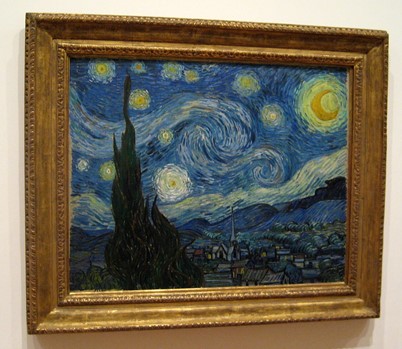Gwendolyn Shotwell of Colorado is an art enthusiast with a passion for the interplay of color, light, and emotion of Impressionism art. In the following discussion, Gwendolyn Shotwell discusses the enchanting realm of Impressionism, unveiling its origins, techniques, and enduring impact on the artistic landscape.
What is Impressionism? There is no better answer than one which examines the pioneers of the movement, specifically, Monet and Van Gogh.
The movement may be the single most important throughout modern painting. Beginning in the
1860s and culminating in the work of artists such as Monet and Van Gogh, Impressionist paintings emphasized freedom of expression rather than a “picture perfect” visual reproduction.
Below, Gwendolyn Shotwell of Colorado examines the work of these pioneers and the legendary movement of their genius.
Gwendolyn Shotwell Provides a Glimpse into Art's Dynamic Shift
Before embarking on the captivating innovations of these two pioneers, and how they revolutionized the very essence of painting, it's imperative to grasp the essence of Impressionism itself. To achieve this, a journey into the chronicles of art history is warranted. Preceding the era of Impressionism, it's crucial to recognize that artists primarily focused on meticulously recreating what their eyes beheld onto the canvas.
Being capable of maintaining accuracy in color, light, and the distinct separation of form and line were all considered the most admirable skills. Artists that excelled within these “rules” were legends of their time, and highly revered.
Gwendolyn Shotwell explains that between the 1860s and 1870s, a new style of painting became its own movement: Impressionism. These painters, emerging largely out of France, rejected what was once considered “fine art” in the form of these strict rules. Instead of making their scenes and subjects as realistic as possible, they focused on creating quick “impressions.”
These artists were particularly captivated by trying to express the effects of sunlight or shadow, working outdoors where the air was open. Their work evoked a shifting of light and dark as a result; swiftness became one of the hallmarks as painters worked quickly to capture natural scenes, using quick, broken brushwork.
Gwendolyn Shotwell of Colorado dives into how these two notable masters of the movement re-defined fine arts through their skill and innovation.
Monet
Claude Monet, or “Monet” as he is widely known today, is remembered for the way he transformed painting at the end of the nineteenth century. Specifically, his landscape paintings of the city of Paris, in addition to the coast of Normandy, are well-loved and pointed to as pillars of the Impressionist movement.
Gwendolyn Shotwell explains that Monet’s first great, ambitious paintings, such as the huge “Women in the Garden” painting of 1866, were not met with resounding approval in the fine arts community. Therefore, he joined many of his former art classmates such as Edgar Degas and Renoir to establish their own independent art exhibition.
Here, the canvas comes alive with Monet's iconic creation, "Impression, Sunrise," igniting a storm of critique and dismissal within the realm of art. Why? Because this masterpiece unapologetically ventured into the domain of indistinct figures and strokes that exuded freedom.
However, this instance held a unique flavor – Monet embraced the scorn of his contemporaries with open arms. In doing so, he and his artistic compatriots with their rapid, emotive techniques were set apart and christened with a new mantle: Impressionists.
Today, Monet’s paintings of France’s great Cathedrals and Normandy’s coast, as well as his own private lily pond, exemplify the obsession with light and feeling that Impressionists used to break the chains of conventional realism in fine arts.
 Van Gogh
Van Gogh
Gwendolyn Shotwell of Colorado says that few artists in the modern world are as deeply romanticized or beloved as Van Gogh, and for that reason, many are aware that the artist was sadly underappreciated in his prime. He did, however, draw some attention for his very
loose style of painting and handling of color.
Though some protest that Van Gogh was not strictly an Impressionist, but a post-Impressionist, his work certainly carries the style of quick strokes and the feeling light, and shadow can evoke which set these pioneers apart.
Gwendolyn Shotwell explains that it was Van Gogh who perfected the technique that many Impressionists introduced, which was short and sharp strokes of the paintbrush to evoke movement of light and color.
While Monet would paint sections of the same scene in different times of daylight, Van Gogh focused more on bold color. Specifically, he took Impressionist use of color to the next level by using even less-realistic saturations.
Van Gogh’s “Starry Night,” is perhaps his most popular painting of all time, exemplified with a deep blue sky, swirling with yellows and whites that, although not quite true to the real black of a night sky, are certainly true to the feelings a view of the heavens might create.
In Conclusion
Monet and Van Gogh were true masters of Impressionism. This is because they were willing not only to reject the norms of fine arts in movements before their time, but to push the boundaries of Impressionism itself. Monet did this through careful, focused study of many moments, while Van Gogh emphasized feeling through bolder colors.
Gwendolyn Shotwell of Colorado says that Impressionism broke through the framework laid down by classical artists. It freed up painting as a means of expressing not just what is seen, but what is felt about what is seen. This is a philosophy that is applied to every branch of art in the world today.
 Van Gogh
Van Gogh